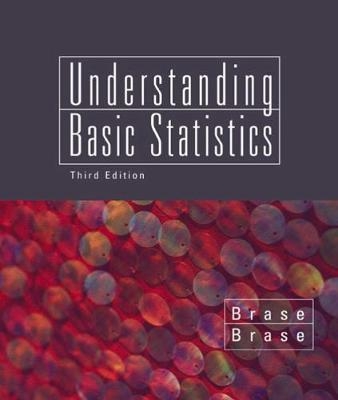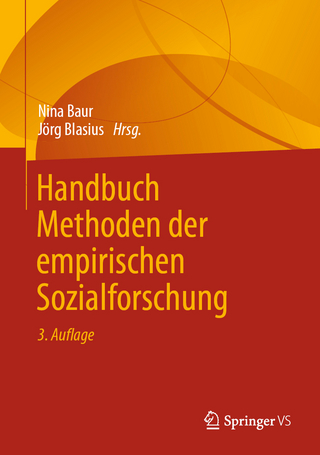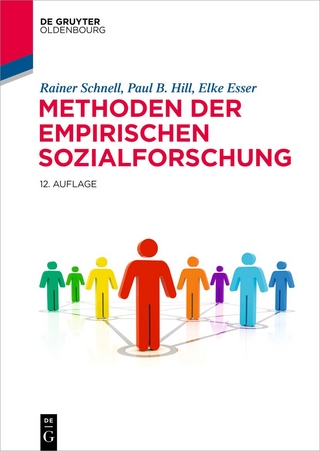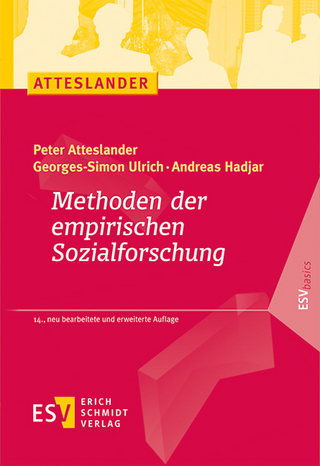
Understanding Basic Statistics, Brief
Brooks/Cole (Verlag)
978-0-618-31553-6 (ISBN)
- Titel z.Zt. nicht lieferbar
- Versandkostenfrei innerhalb Deutschlands
- Auch auf Rechnung
- Verfügbarkeit in der Filiale vor Ort prüfen
- Artikel merken
A condensed and more streamlined version of the very popular and widely used Understandable Statistics, 7/e, this book offers instructors an effective solution to teaching the essentials of statistics within a more limited time frame. Designed to help students overcome their apprehension about statistics, Understanding Basic Statistics is a thorough, yet approachable text that provides plenty of guidance and informal advice demonstrating the links between statistics and the world. The Third Edition includes several new features that enhance learning and simplify instructor preparation. A robust set of technology resources, including a Video/DVD series, provides students with valuable reinforcement.
Charles Brase has more than 30 years of full-time teaching experience in mathematics and statistics. He taught at the University of Hawaii, Manoa Campus, for several years and at Regis University in Denver, Colorado, for more than 28 years. Dr. Brase received the Excellence in Teaching award from the University of Hawaii and the Faculty Member of the Year award from Regis University on two occasions. He earned degrees from the University of Colorado, Boulder, and he holds a Ph.D. and an M.A. in mathematics and a B.A. in physics. Corrinne Pellillo Brase has taught at Hawaii Pacific College; Honolulu Community College; and Arapahoe Community College in Littleton, Colorado. She was also involved in the mathematics component of an equal opportunity program at the University of Colorado. Professor Brase received the Faculty of the Year award from Arapahoe Community College. She earned her degrees from the University of Colorado, Boulder, and she holds an M.A. and a B.A. in mathematics.
Each chapter concludes with a Summary, Important Words & Symbols, Chapter Review Problems, Data Highlights: Group Projects, Linking Concepts: Writing Projects, and Using Technology.
Preface
A User's Guide to Features
Table of Prerequisite Material
1. Getting Started
Focus Problem: Where Have All the Fireflies Gone?
1.1 What Is Statistics?
1.2 Random Samples
1.3 Introduction to Experimental Design
2. Organizing Data
Focus Problem: Say It with Pictures
2.1 Bar Graphs, Circle Graphs, and Time Plots
2.2 Frequency Distributions and Histograms
2.3 Stem-and-Leaf Displays
3. Averages and Variation
Focus Problem: Why Bother!
3.1 Measures of Central Tendency: Mode, Median, and Mean
3.2 Measures of Variation
3.3 Percentiles and Box-and-Whisker Plots
4. Regression and Correlation
Focus Problem: Changing Populations and Crime Rate
4.1 Introduction to Paired Data and Scatter Diagrams
4.2 Linear Regression
4.3 The Linear Correlation Coefficient
5. Elementary Probability Theory
Focus Problem: How Often Do Lie Detectors Lie?
5.1 What Is Probability?
5.2 Some Probability Rules--Compound Events
5.3 Trees and Counting Techniques
6. The Binomial Probability Distribution and Related Topics
Focus Problem: Personality Preference Types: Introvert or Extrovert?
6.1 Introduction to Random Variables and Probability Distributions
6.2 Binomial Probabilities
6.3 Additional Properties of the Binomial Distribution
7. Normal Distributions
Focus Problem: Large Auditorium Shows: How Many Will Attend?
7.1 Graphs of Normal Probability Distributions
7.2 Standard Units and Areas Under the Standard Normal Distribution
7.3 Areas Under Any Normal Curve
7.4 Normal Approximation to the Binomial Distribution
8. Introduction to Sampling Distributions
Focus Problem: Impulse Buying
8.1 Sampling Distributions
8.2 The Central Limit Theorem
8.3 Class Project Illustrating the Central Limit Theorem
9. Estimation
Focus Problem: Trick or Treat!
9.1 Estimating � with Large Samples
9.2 Estimating � with Small Samples
9.3 Estimating p in the Binomial Distribution
9.4 Choosing the Sample Size
10. Hypothesis Testing
Focus Problem: Business Opportunities and Start-Up Costs
10.1 Introduction to Hypothesis Testing
10.2 Test Involving the Mean � (Large Samples)
10.3 The P Value in Hypothesis Testing
10.4 Tests Involving the Mean � (Small Samples)
10.5 Tests Involving a Proportion
11. Inferences About Differences
Focus Problem: The Trouble with Wood Ducks
11.1 Tests Involving Paired Difference (Dependent Samples)
11.2 Inferences About the Difference of Two Means (Large, Independent Samples)
11.3 Inferences About the Difference of Two Means (Small, Independent Samples)
11.4 Inferences About the Difference of Two Proportions
12. Additional Topics Using Inference
Focus Problem: Stone Age Tools and Archaeology
Part I: Hypothesis Tests Using the Chi-Square Distribution
12.1 Chi Square: Tests of Independence
12.2 Chi Square: Goodness of Fit
12.3 Testing a Single Variance or Standard Deviation
Part II: Inferences Relating to Linear Regression
12.4 Linear Regression: Confidence Intervals for Predictions
12.5 Testing the Correlation Coefficient and the Slope
Appendix. Tables
Table 1: Random Numbers
Table 2: Binomial Coefficients Cn,r
Table 3: Binomial Probability Distribution Cn,rprqn-r
Table 4: Areas of a Standard Normal Distribution
Table 5: Student's t Distribution
Table 6: The X2 Distribution
Photo Credits
Answers and Key Steps to Odd-Numbered Problems
Index
| Verlagsort | CA |
|---|---|
| Sprache | englisch |
| Maße | 215 x 252 mm |
| Gewicht | 1230 g |
| Themenwelt | Sozialwissenschaften ► Soziologie ► Empirische Sozialforschung |
| ISBN-10 | 0-618-31553-5 / 0618315535 |
| ISBN-13 | 978-0-618-31553-6 / 9780618315536 |
| Zustand | Neuware |
| Haben Sie eine Frage zum Produkt? |
aus dem Bereich



